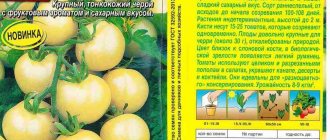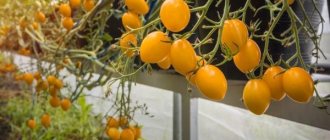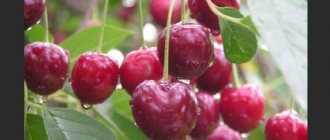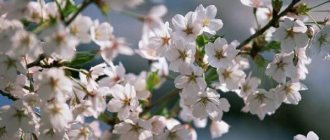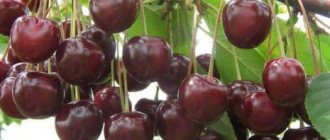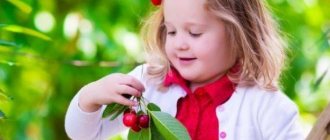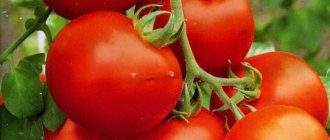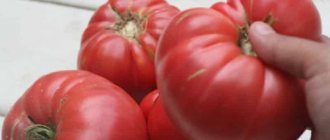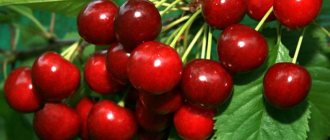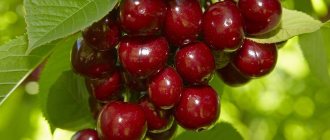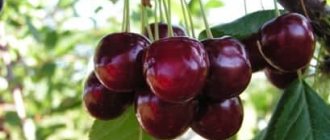- Characteristics of the variety
- Tree
- Fruit
- Care
- Landing place
- Landing
- Top dressing
- Trimming
- Wintering
- Watering
- Mulching
Late varieties include Michurinskaya cherry. It is used to make sweet confitures, jams and jams.
Cherry Chocolate Girl
The variety was bred at the end of the 20th century. The fruits are burgundy. This is a small tree. Its height is no more than 2.5 m. The combination of branches and leaves form a pyramidal shape.
The plant looks more like a shrub than a tree. Produces many fruits. The flowers are painted white.
Blooms in May. Cherries ripen in July. But the timing may vary in different regions. They taste sweetish, slightly sour.
The weight of one fruit is up to 3.5 g. The seed is easily separated from the pulp. Productivity – up to 15 kg. Fruiting begins 3 years after planting. Grows up to 20 years.
- cold resistance
- early ripening of cherries
- undemanding to soil moisture
- prone to infection with mycoses.
Chocolate cherry is a young variety. Therefore, its seedlings are not very easy to find on sale. To grow it, you need to choose a well-lit part of the garden.
The tree must be pruned every year. You can water during flowering and fruit formation. Feed only 3 years after planting . Then once every 4 years.
Can be grown in any region of Russia.
According to gardeners:
Photo and description of the Michurinskaya cherry variety
The Michurinskaya cherry was bred at the All-Russian Research Institute of Horticulture named after. I.V. Michurina. The author of the variety is T.V. Morozova. The hybrid was obtained from Leningradskaya yellow cherry seedlings. Since 1994 it has been under state variety testing.
Mature tree height
An adult tree grows up to 4 m. The Michurinskaya variety grows quickly and acquires a round-oval crown of medium density. The stem and skeletal shoots are brown. The branches are straight, powerful, bare, with small lentils. The buds are medium-sized, egg-shaped, and strongly deviate from the shoots. The leaves are medium-sized, shiny dark green, narrow and oval. The petioles are thin and short.
Flowering and ripening period
Flowering begins in the middle period - from May 10 to 15. The white flowers are large with rounded petals. The fruits ripen from the second decade of July. The cherries are larger than average in size, weighing 6.5 g. The shape of the fruit is wide-heart-shaped, rounded at the apex, with a small depression at the base. The color is dark red, there are no subcutaneous points. The taste is sweet, dessert. The short stalk is easily separated from the branch. The medium-sized, oval, smooth stone easily comes away from the pulp.
Productivity
The variety produces a regular annual harvest. From 1 hectare of plantings, from 80 to 140 centners of fruits are collected. Fruiting begins only at 5-6 years.
What is foam rubber: properties and composition, rules for a successful choice (sizes and brands)
Transportability
The fruits have high transportability. The variety is grown on an industrial scale. The purpose of Michurinskaya cherries is universal: fresh consumption, freezing, canning.
Drought resistance
The Michurinskaya variety is highly resistant to drought. Only young plantings need watering. The root system of an adult plant goes deep, absorbing moisture from the soil.
Frost resistance
The winter hardiness of the Michurinskaya variety is below average. The wood is not resistant to winter frosts, which negatively affects the development of cherries. Therefore, it is grown in warm climates with mild winters.
Cherry-cherry hybrids
Varieties obtained by crossing cherries and sweet cherries are usually called dukes. About 30 species of such hybrids grow in Russia. Several varieties will be described below.
Kharitonovskaya
Cherry with a medium ripening period. The height of the tree is 2.5 - 3 m. The branches form a spherical shape.
The cherries are dark red in color, juicy, weighing about 5 g. Sweet and sour. The stone can be easily separated from the pulp.
But she's quite big. They have good transportability. Fruiting occurs in the 4th year of planting.
It is capable of pollinating on its own, but for good fruiting the following varieties should be planted next to it:
- it is rarely affected by fungal diseases.
- not suitable for cultivation in areas with severe frosts.
Podbelskaya
Tall tree - up to 5 m. The collection of branches forms a round shape.
Cherries are dark red in color, weighing up to 5 g. Fibrous. The taste is sweet and sour.
Fruiting begins 4–5 years after planting, in mid-summer. The fruits ripen gradually. The seed comes away from the pulp without difficulty. Can be used in any form.
This variety is not able to withstand strong drops in air temperature.
The plant's pollen is sterile. It is recommended to plant cherries next to it, or such varieties of cherries as:
- English early
- Lotovaya
- Anadolskaya
- May Duke
- Griot Ostheim
The combination of branches and leaves forms a pyramidal shape. The flowers are large and white. The fruits are dark red in color, weighing up to 10 g.
They taste sweet, similar to cherries. But the aroma is reminiscent of cherries. Full fruiting begins in the 4th year of planting. Productivity – 10 – 15 kg per tree.
The miracle bears fruit every year. The first harvest can be harvested at the end of June. This is a cross-pollinated cherry variety.
To get a harvest, you need to plant cherries next to it.
The branches of a tree have the property of stretching upward. To properly form the crown, some gardeners tie weights to the branches. The variety is better suited for warm regions of the country.
It is not worth planting in central Russia. The landing site must be chosen as windless, bright, and without close groundwater.
The plant must be pruned within 5 years. In the first year of life, during spring pruning, 1/6 of the shoots are cut off.
- The variety is resistant to fungal diseases.
- Cherry Miracle cannot become a pollinator - its pollen is sterile.
Baby
Plant height is 2 – 2.5 m. It grows very quickly. Not able to pollinate on its own.
Flowering begins in May. Early - bears fruit in June, 3 - 4 years after planting. 1 cherry weighs about 5 g. The color is dark red.
Up to 15 kg of crop is harvested from one plant. Pleasant to the taste, slightly sour. They are mainly used fresh, but they are also suitable for preparation.
Transportable. They are stored for no more than 10 days.
- high yield
- disease resistance
- endurance to strong drops in air temperature
- pleasant taste of fruits
- Susceptible to certain diseases
The best neighbors for her:
Shpanka
The variety was bred by Ukrainian breeders. Trees with early fruit ripening.
It is popular not only in its own country, but also abroad. These are tall plants up to 6 m. Fruiting begins at the age of 5–6 years, in June or early July.
The harvest is harvested gradually. An adult plant produces up to 0.5 centners of fruit. The cherry is dark brown in color, weighing 4–5 g.
Prone to shedding. There is a small bone inside that can be easily separated from the pulp. The taste is sweet, with a slight sourness. Can be used both fresh and for preparation and freezing.
Able to be pollinated by its own pollen. But at the same time, a small amount of fruit is obtained.
How to grow Michurinskaya cherries
Late varieties include Michurinskaya cherry. It is used to make sweet confitures, jams and jams.
Characteristics of the variety
This colorful variety was bred by the famous breeder I.V. Michurin in the Rostov region. The basis for creating the species was a seedling of the Michurinskaya dwarf cherry.
The advantage of Michurinskaya cherries is their high yield. Per year it is 30-45 kg per tree.
Other benefits:
- good transportability;
- fruits can be stored for 7-10 days at cool temperatures;
- high immunity;
- excellent winter hardiness.
Cherry variety Michurinskaya is fertile. The first fruits appear 5 years after planting.
Tree
This variety is medium-sized with an oval wide crown. The trunk color is brown.
Description of leaves:
- narrow;
- dark green;
- have a smooth surface with slight serrations.
The leaves are often added to twists for flavor. In the spring, during the flowering period, the tree is covered with large white flowers with a slight pink tint.
Care
Care begins with the right choice of seedling. Approximate parameters: height up to 1 m, age 1-2 years.
The root system can be either closed or open. Branching about 20 cm.
It is important to carefully examine the tree for diseases and damage. Particular attention should be paid to examining the bark, because even small wounds can lead to serious illness.
It is better to purchase a seedling in spring or autumn.
Landing place
Cherries need to be planted in the spring. The late variety Michurinsky loves warmth and moisture, but does not tolerate wind. You need to choose a site closer to the south.
You need to plant before the buds open. An important point - you cannot plant a seedling in the place of old cherries.
Top dressing
It is important to fertilize not only at planting, but also after several years of growth.
In the spring, before the buds open, double superphosphate, potassium salt and ammonium nitrate should be added to the soil. After the cherry tree has bloomed, you can feed it with wood ash.
Description of mineral fertilizers:
- Superphosphate is a phosphate fertilizer. Helps improve metabolism, increases productivity. It must be added during autumn digging.
- Potassium salt is used to improve soil quality. Helps stimulate growth. It is better to fertilize with potassium salt in autumn or early spring. For the late variety of Michurinskaya cherries you will need 5 g.
- Ammonium nitrate is fed in the spring. It is needed to saturate the plant with nitrogen. Complex fertilizers have an excellent effect. An effective solution consists of 10 g of urea, 10 liters of water, 25 g of superphosphate, 15 g of sodium chloride. It should be applied during flowering. This is enough to feed 5-6 trees.
Trimming
It is worth starting pruning immediately after planting. In subsequent years, you can only form the crown.
The best shape for a fruit tree is a main trunk and tiers with 6 branches.
Be sure to trim branches that grow inward. They create thickening, and this reduces yield.
Wintering
One of the problems is freezing. Fed and healthy trees suffer much less.
The seedlings will not freeze too much if their trunks are whitened in advance. This needs to be done in October. Another way to protect a tree from freezing is to feed it with wood ash in the fall.
Common cherry varieties
This species was known in ancient times. Today it does not grow wild.
Dessert Morozova
The variety was named after the breeder who bred it. Suitable for growing in temperate climates. Medium height plant.
The collection of branches forms a round shape. The flowers are large and white. Large-fruited – 4.7 – 5 g. The color of ripe cherries is red.
They are juicy inside. The seed is easily separated from the pulp. Can be transported over long distances. The taste is sweet, slightly sour. Productivity – up to 35 kg.
Early ripening. The first harvest is harvested in June. Fruiting occurs in the 3rd – 4th year of the plant’s life. Without a neighboring pollinating tree, only 1/5 of the fruits are formed.
It is recommended to plant the following varieties of cherries next to it:
- Vladimirskaya
- Griot Ostheim
- Studencheska
- Griot Rossoshansky
- precocity
- high yield
- pleasant taste
- annual fruiting
- frost resistance
- Disadvantages include poor resistance to disease.
Youth
The variety is suitable for cultivation in the northern regions of Russia and the Moscow region. Tree height – 2 – 2.5 m. The crown is spherical, of medium density. The branches are lowered to the ground. The flowers are white. Self-pollinating.
Blooms in May. Refers to frost-resistant and drought-resistant varieties. The harvest is harvested in July. You can harvest up to 15 kg of cherries from one plant.
Fruit weight – 4 – 5 g. Cherries are dark burgundy in color. Meaty and juicy inside. Easily separated from the seed. The taste is pleasant, with sourness.
The youth variety begins to bear fruit in the 4th – 5th year of planting. The tree grows up to 15–20 years.
To plant it, you need to choose an elevated, bright area in the garden. Do not plant in places with strong drafts.
Watering is required during flowering and fruiting. Prune in the spring - before the buds swell. In the first years of life, feeding is not needed.
Youth has an average degree of resistance to mycoses.
A variety for universal use. Tolerates transportation well.
Gardeners speak well of it:
Lyubskaya
Tree up to 2.5 m high. The combination of branches forms a spherical shape. The flowers are painted white.
The first harvest can be obtained a few years after planting. Every year thereafter. Able to bear fruit without the participation of other plants.
Late ripening. Fruiting begins in July - August. Ripe cherries are dark red and juicy. Weight – 4 – 5 g.
The seed is easily separated from the pulp. They taste sour. Not prone to shedding. Used mainly for processing. Can be stored and transported.
In temperate climates, the yield is 25 kg per tree. In the south of Russia, these figures can reach up to 35 kg.
It is not suitable for planting in regions of the country with harsh climatic conditions. Susceptible to fungal diseases. Grows depending on climatic conditions for 15 - 25 years.
To grow it you need to choose a site:
- with enough sunlight
- without strong drafts
- groundwater - no higher than three meters
- exalted
Zhukovskaya
Mid-season. Trees are 1.5 - 3 m high. The crown is rounded. The flowers are white, large.
The harvest is harvested in July. The trees begin to bear fruit in the 4th year of planting. They grow up to 20 years. Ripe fruits are juicy and dark red.
Weight - 4 - 7 g. The taste is reminiscent of cherries - sweet, with a slight sourness. The pulp comes off well from the seed. Suitable for fresh use and for preparations.
Productivity depends on age - 12 - 30 kg.
Not able to pollinate on its own. It is recommended to plant the following varieties of cherries next to it:
- Lyubskaya
- Apukhtinskaya
- Vladimirskaya
- Consumer goods black
- Youth
Cherry fertile michurina variety description
ARTICLES GARDENER'S ENCYCLOPEDIA LIBRARY PROJECT MAP LINKS ABOUT THE PROJECTThe variety plays a vital role in increasing the production of cherry fruits and improving their quality.
In the non-chernozem zone of the RSFSR, the assortment of cherries is extremely diverse. It is represented by both varieties of folk selection and varieties of Western European origin, as well as new varieties of Soviet selection.
The main most common varieties in most areas of the non-chernozem zone are the Lyubskaya and Vladimirskaya varieties, which account for 70%. The varieties Shubinka, Polevka are widespread, and to a lesser extent - Zhukovskaya, Sklyanka rozovaya, Griot Ostgeimsky, Fertile Michurina, etc. The new varieties Griot Moskovsky, Smena, Bagryanaya still have a small percentage in the assortment.
In the central regions of the non-chernozem zone, cherry occupies from 5 to 12% of the proportion of fruit crops, and in the northwestern regions - 3-8%.
In the northwestern zone, in addition to the Vladimirskaya variety, a large percentage of the breed is occupied by the local, fairly winter-hardy variety Korostynskaya. Of the new varieties, Amorel Nikiforova and Rubinovaya are zoned here.
The varietal composition of the garden depends on its economic direction. As a rule, industrial orchards are planted with a limited number of varieties characterized by high productivity, transportability and good taste of the fruit. In home gardens, the cherry assortment can be expanded and selected so that the period of consumption of fresh fruits is longer.
Choosing the right assortment for an industrial or home garden, taking into account all conditions, is possible only with a good knowledge of the varieties, their economic and biological characteristics.
Below is a description of the majority of cherry varieties released in the non-chernozem zone. It is known that all the properties of a variety manifest themselves differently in different soil and climatic conditions, therefore the characteristics of varieties are based on data obtained in the area where the variety was bred.
Amorel Nikiforova. A variety of folk selection, isolated by the Leningrad Fruit and Vegetable Experimental Station from cherry plantations in the Novgorod region. The tree is small in size, with a dense spreading crown, convenient for collecting fruits. The productive life span of a tree is 15-16 years.
In terms of winter hardiness, the variety is classified as medium-hardy. In severe winters, freezing of flower buds to varying degrees is observed.
It begins to bear fruit 2-3 years after planting. It blooms in the third decade of May, the fruits ripen early - in the first half of July. The variety is productive; according to long-term data, the average fruit weight per tree is 6.6 kg, the maximum is 16.0 kg.
The fruits are of medium size - 3 g, one-dimensional, flat-round in shape, light red in color, firmly attached to the tree (Fig. 6). The pulp is juicy, tender, good sweet and sour taste, the juice is light-colored. The stone is small in size and easily separated from the pulp.
Rice. 6. Cherry Amorel Nikiforova
Crimson. The variety was bred at the Research Zonal Institute of Horticulture of the Non-Black Earth Zone by K. K. Enikeev from crossing Vladimirskaya and Shubinka.
It grows as a medium-sized bush. The crown is wide, spherical. The variety belongs to the group of early-bearing and high-yielding ones. A 6-year-old plant produces 7-10 kg of fruit.
Fruit ripening dates are average, harvest maturity is the second half of July. The fruits are medium-sized, dark red, with a large number of clearly visible subcutaneous points. The pulp is dark red, medium density, sweet and sour taste. The juice is dark-colored. The shape of the fruit is round. The peduncle is thin. The stone is medium in size, easily separated from the pulp, and round in shape.
The variety belongs to the medium-winter-hardy group. Bagryannaya fruits are used both fresh and for processing.
Belle. A variety of folk selection, widespread in the Vladimir region.
It grows as a medium-sized tree (or bush). The crown is spherical, well leafy. One-year shoots are greenish-brown, two- and three-year-old shoots are thick, strong, with a large number of bouquet branches.
The leaves are medium-sized, dark green, leathery, with a slight shine, elliptical in shape with a pointed tip.
The fruits are below average size, round in shape, somewhat flattened on the side of the stalk, the apex of the fruit is round. The skin is light red in color and shiny. The pulp is pale pink, juicy, sweet and sour taste. The juice is slightly pink. The bone is small, somewhat elongated, oval in shape.
The variety is distinguished by high frost resistance and high yield. 8-year-old trees can produce up to 20 kg of fruit. Ripens somewhat later than Vladimirskaya. The variety is self-sterile. It produces good yields when pollinated by other varieties.
Vladimirskaya. A variety of folk selection. It grows in the form of a bush with several trunks up to 2.5-3 m high. The tree forms a spreading, wide crown up to 3-4 m wide.
The bark is smooth, brown in color, on young trees it is yellowish-brown with a gray coating. The branches are hanging, bare, forming a weeping crown. The crown is sparse, leafy only at the ends of the branches. It begins to bear fruit 3-4 years after planting. Fruits on annual shoots. The tree is quite frost-resistant, and damage to the vegetative parts is rarely observed. Fruit buds are less frost-resistant and freeze slightly in severe winters. It blooms at the end of May, the fruits ripen in the second half of July - early August. The average yield per tree is 6-8 kg, the maximum is 11-13 kg.
The fruits are flat-round in shape, slightly flattened, weighing 3-4 g. The skin is dark red, and when fully ripe, almost black in color, easily separated from the pulp. The pulp is juicy, sweet-sour, pleasant taste, aromatic, dark-colored. The juice is dark red. The stone is 0.5 g, round-flat, easily separated from the pulp. The peduncle is short, thick, easily breaks off when bent and lags behind the fruit (Fig. 7). The fruits are well transported, suitable for fresh consumption and processing. The variety is practically self-sterile.
Rice. 7. Cherry Vladimirskaya
Griot Moscow. This is a clone of Griot Ostheim, isolated by K. K. Enikeev.
Belongs to the group of bush cherries. It begins to bear fruit in the 3rd-4th year and produces high yields. The average fruit yield from one bush is 7.4 kg, the maximum is 15.5 kg. It blooms in the second decade of May, the fruits ripen in the second half of July.
The fruits are medium-sized (3 g), round, sometimes somewhat flattened, dark red or black-red in color. The pulp is dark red, tender, very juicy, with a pleasant, sweet and sour taste. The winter hardiness of the variety is significantly greater than that of Griot Ostheim, but it is not sufficient. In severe winters, freezing of fruit buds and vegetative parts is observed.
Griot Ostheim. The variety comes from Spain. It grows as a medium-sized bush. The crown is spherical or somewhat spreading, well leafy. Annual shoots are thin and brown. Two- and three-year-old branches are brown, spreading or even drooping.
The leaves are medium in size, obovate in shape with a pointed tip.
It begins to bear fruit 3-4 years after planting. Ripens almost simultaneously with Vladimirskaya or slightly earlier.
The fruits are medium-sized, almost round, slightly laterally compressed, dark-colored. The pulp is juicy, sweet and sour. The juice is dark red. The peduncle is long and thin. The stone is small, round-ovoid.
The fruits are suitable for fresh consumption and for processing.
The variety is close to Vladimirskaya in many properties, but is somewhat inferior to it in terms of fruit taste. The tree's productivity is high, but its winter hardiness is insufficient. In harsh years, freezing of trees and fruit buds is observed. The variety bears fruit well in single-varietal plantings, but when pollinated by other varieties it produces a larger yield.
Zhukovskaya. The variety was bred at the Central Genetic Laboratory named after. I. V. Michurina. The trees are vigorous, up to 3.5–4 m in height. The crown is wide, round, somewhat spreading, and medium dense. The bark is reddish brown. The lower branches extend from the trunk at almost a right angle, the upper ones at a sharp angle.
The shoots are thick, brown-green to reddish-brown in color, curved. The leaves are quite large, oblong-oval, slightly shiny.
In terms of fruit quality, it is one of the best varieties of cherries. The fruits are dark red, oval-heart-shaped. The pulp is dark red, dense, juicy, with a sweet and sour taste. The juice is dark red. The peduncle is long, of medium thickness. The stone is medium in size and easily separated from the pulp. Fruit weight is 3-4 g, ripening is almost simultaneous with Vladimirskaya. The fruits ripen together and do not fall off. They are used both fresh and processed. Productivity is high, winter hardiness is average.
Korostynska. Local variety of the Novgorod region. It has good winter hardiness and productivity. It usually grows in the form of a tall bush, up to 3-5m high, with 3-4 trunks. The crown is oval-cone-shaped, of medium density. The branches extend at an angle of 70-90°, the shoots are thin, the bark is gray and matte. The leaves are dark green, elongated oval or obovate. It produces a lot of shoots, which are used as planting material. When propagated by grafting, it begins to bear fruit in the 4th-5th year.
The average yield, according to the Leningrad Fruit and Vegetable Experimental Station, is 8.3 kg per bush. The variety is resistant to diseases and pests. Fruits mainly on annual shoots. The fruits ripen in early August.
The size of the fruit is average - up to 3 g, their shape is flat-round, slightly flattened on the sides. The skin is dense, dark cherry color, almost black when ripe, easily peeled off. The pulp is dark red, juicy, sweet and sour, with coloring juice. The stone is small and easily separated from the pulp. The stalk is quite long and thin. The fruits are tightly attached and do not fall off when ripe (Fig. 8).
Rice. 8. Cherry Korostynska
According to the taste of the fruit, the variety is classified as technical. It is self-fertile; existing single-varietal plantings bear fruit well. However, when pollinated by other varieties, the yield increases.
Levinka. Local variety from the Vladimir region. A tree (or bush) of medium size or large (up to 4-5 m), with a paniculate or pyramidal, well-leafed crown. One-year shoots are grayish-brown, two- and three-year-old shoots are dark brown, strong, growing slightly upward.
The leaves are medium sized, dark green, matte or slightly glossy, almost flat.
According to A. N. Venyaminov, grafted trees begin to bear fruit 4-5 years after planting, the average yield per tree is 8-9 kg. The fruits ripen almost simultaneously with Vladimirskaya or a little later.
The fruits are medium-sized or large, rounded-oblong in shape. The skin is dense, somewhat rough, shiny, dark red. The pulp is dark red, juicy, bitterish-sour. The juice is red. The stone is rounded-oblong, larger than that of Vladimirskaya. The peduncle is long, thin, firmly attached to the fruit. Levinka is a partially self-fertile variety, but bears fruit better when pollinated by other varieties.
Lyubskaya. An ancient Russian variety, cultivated in the middle zone for a long time, and currently occupies a leading position in most regions of the European part of the USSR. It grows as a small bush. The crown is round, convenient for collecting fruits. On mature plants, drooping branches and bare fruiting parts are observed. The shoots are quite thick, especially in the lower part, and grayish-brown. The leaves are large, obovate, with large glands at the base of the leaf.
It blooms at the end of May, the fruits ripen late, at the end of August. Ripe fruits stay on the tree for a long time. The variety is high-yielding. The fruits are large, up to 4-5 g, round, slightly tapering towards the apex. The skin is thick, strong, red-purple when ripe, easily separated from the pulp. The pulp is quite dense, red with streaks, sour or sweet and sour taste (Fig. 9). The bone is large, oval. A valuable property of the variety is good transportability of the fruit.
Rice. 9. Cherry Lyubskaya
The variety is fast-bearing and self-fertile, but when pollinated by other varieties it produces higher yields. The winter hardiness of fruit buds is high, and the tree often freezes.
Morel lot. It grows as a medium-sized tree (or bush). The crown is spreading, with few or medium leaves. Annual shoots are thick, greenish-brown. The leaves are medium-sized or large, dark green, matte.
The fruits are large or medium (3.5-4 g), round or rounded-heart-shaped, with a clearly visible seam. The apex of the fruit is rounded-convex. The skin is shiny, thin, red or dark red. The pulp of the fruit is red or light red, juicy, with a pleasant sweet and sour refreshing taste. The juice is colored.
Morel lotova belongs to the group of late-ripening varieties. The fruits are well attached to the stalk and can hang on the tree for a very long time. The peduncle is long or medium length, green. The seed is medium-sized or small. The variety is self-fertile.
According to the most important economic and biological indicators, this variety resembles Lyubskaya.
Orlovskaya early. The variety was obtained at the Oryol fruit and berry experimental station. Its origin has not been established. It grows as a tree up to 3 m in height with a characteristic tree-like habit.
In terms of ripening time, the variety is one of the earliest in the middle zone, which is why it compares favorably with other varieties. In some years, the yield from one tree reaches 7.5 kg.
The fruits are medium in size, weighing about 3 g. The shape of the fruit is close to round, somewhat laterally compressed. The taste of the fruit is good (from 3 to 4 points).
In terms of winter hardiness of the tree and fruit buds, Orlovskaya early belongs to the group of medium-winter-hardy varieties.
Domestic. The variety was bred at the All-Union Research Institute of Plant Growing from crossing Krasnopakharskaya and Vladimirskaya.
It grows as a small tree up to 2.5 m high with a round-oval crown of medium density. The branches are thin, elastic, rough, brown with a gray coating, extending from the trunk at an angle of 45°. The leaves are quite large, dark green, elongated oval in shape.
The fruiting period begins 2-3 years after planting. Blooms at the end of May, mid-ripening variety.
The fruit is medium-sized, weighs about 3.5 g, round or wide-round with delicate, thin skin, dark red in color. The pulp is tender and juicy, of good taste.
The variety's yield reaches 6-7 kg per tree, winter hardiness is average.
Fertile Michurina. The variety was bred by I.V. Michurin from sowing seeds of a selected seedling of the steppe cherry Michurinskaya dwarf. It grows as a small bush up to 2-2.5 m high. The crown is wide, rounded, with hanging branches. The branches are of medium thickness, sinuous, rough, brown with a gray coating. The leaves are medium-sized, leathery with an elongated leaf blade and a short thick petiole with glands.
It begins to bear fruit 2-3 years after planting. It blooms a week later than other varieties, ripens late - in late August - early September. After ripening, the fruits can hang on the tree for a long time.
The fruits are round, slightly compressed at the apex, with a clearly defined groove. The skin is dark red, smooth, dense, inseparable from the pulp. The pulp is dark red, juicy, sweet and sour taste, with excess acid. The juice is pink, coloring. The average fruit weight is 5 g (Fig. 10). The stone is quite large, oblong-oval in shape.
Rice. 10. Cherry Fertile Michurina
Fertile Michurina is one of the annual fruiting varieties that produce a high yield of fruits - 15-18 kg per bush. According to A. N. Venyaminov, an adult plant of this variety can produce up to 48 kg of fruit. Fruits mainly on long annual shoots.
The variety is resistant to diseases and pests, self-fertile, but bears fruit better in mixed plantings.
Vole. The variety was bred by I.V. Michurin by sowing cherry seeds Ideal from free pollination. It grows as a bush of small height (up to 1.5-2 m), less often as a tree. The crown is spherical, spreading, “weeping”, which is a characteristic varietal feature of the Vole. The foliage of the crown is average. The shoots are thin, grayish-green in color. The branches are grayish-brown. Fruits mainly on annual growths.
The leaves are medium-sized, broadly elliptical in shape. The leaf blade is bright green and shiny. Fruitfulness begins 2-3 years after planting. It bears fruit annually and produces a high yield - up to 12-16 kg or more per bush. The fruits ripen in late July or early August.
The fruits are medium-sized, red, with pink, juicy pulp, sweet and sour taste. The juice is slightly colored. The shape of the fruit is round. The peduncle is medium or long, thin, well attached to the fruit. The bone is small, oblong in shape.
The variety is characterized by high winter hardiness of wood and fruit buds.
Ruby. The variety was bred at the All-Union Research Institute of Plant Growing by selection from steppe cherry thickets.
Grows as a bush up to 2.5 m in height. The crown is wide, dense, spreading. The branches are curved, rough, brown with a gray coating, extending from the trunk at an acute angle. The shoots are short, slightly curved. The leaves are dark green, rather large, elongated oval or obovate in shape, with a smooth, shiny, leathery leaf blade and moderately pronounced nervation.
It begins to bear fruit 2-3 years after planting. It blooms at the end of May, the fruits ripen in the third decade of July. Fruit ripening is relatively simultaneous. The average weight of fruits from one adult plant reaches 6 kg.
The fruits are large, round in shape, compressed from the ventral seam, with a medium depression in the stalk, bright red in color. The pulp is yellowish, juicy, tender, with a pleasant sweet and sour taste. The average weight of the fruit is 4 g. The stone is medium-sized and easily separated from the pulp. The winter hardiness of the variety is satisfactory.
The bottle is pink. An ancient Russian variety. Grows as a tall tree (up to 4 m or more). The crown is spherical, densely leafy. Annual shoots are greenish-brown in color, the branches are dark brown, spreading, with a large number of bouquet branches. The leaves are medium sized or small, dense, obovate or elongated oval in shape, sharply pointed towards the apex. The leaf blade is bright green, shiny, folded along the midrib like a boat.
Pink flask is a medium-winter-hardy variety; in severe winters, freezing of wood and flower buds is observed. In favorable years it produces high yields, especially when pollinated by other varieties.
The fruits ripen early - in early July. The fruit size is average - 3 g, the shape is round or flat-round. The apex of the fruit is round, sometimes somewhat flattened. The skin is bright red or pink, dense, transparent, with a slight bitterness. The pulp is reddish-yellow, with noticeable veins, very juicy, tender, with a sweet and sour refreshing taste. The juice is uncolored. The peduncle is medium-sized or short. The stone is small or medium in size, ovoid or oblong-round in shape.
Change. The variety was obtained by Kh. K. Enikeev and V. A. Efimov at the Research Institute of Horticulture of the Non-Black Earth Zone from crossing Vladimirskaya and Shubiika. Medium-sized trees with a spherical, slightly drooping crown. The fruits are below average size or medium (2-3 g), round in shape, laterally compressed. The skin is thin, dense, dark red, almost black. The pulp is dense, also intensely colored, medium juicy, sourish-sweet, of good taste. Fruit ripening is the second half of July. The bone is small in size. In terms of fruit quality, Smena is close to Vladimirskaya. The fruits can be consumed fresh and for technical processing. The variety is high-yielding. The average yield per tree is 7.7 kg. In terms of winter hardiness, Smena belongs to the group of medium-winter-hardy varieties.
Harvest. The variety was bred by F.K. Teterev at the All-Union Research Institute of Plant Growing. Grows as a bush up to 1.5 m in height. The crown is spherical, of medium density and foliage. The stems are thin, rough, gray in color. The branches are thin, geniculate. The shoots are straight and flexible.
The leaves are dark green, oval-elongated, with a smooth, dense and shiny leaf blade, on which the nerves are slightly pronounced. It begins to bear fruit 2-3 years after planting.
The fruits are medium-sized or small (up to 2.9 g), round, slightly oval or heart-shaped. The skin is red, medium thickness. The pulp is light yellow or orange, low-juicy, sweet and sour, with some excess acid, somewhat astringent taste. The juice is slightly pinkish. The stone is medium in size and easily separated from the pulp.
The fruits ripen simultaneously in the first ten days of August. The fruit harvest from the tree reaches 8-9 kg. The variety is frost-resistant.
Black consumer goods. The variety was bred by I.V. Michurin from crossing the Yubileiny cherry with the Pervenets cherry. It grows as a medium-sized bush, reaching a height of 2.5-3 m at the age of 10. The crown is rounded and not very dense. The branches are of medium thickness, brown with a gray coating, sinuous, rough. Annual shoots are slightly arched or straight.
The leaves are ovate or obovate, light green. It begins to bear fruit in the 3rd year after planting. It is distinguished by high taste qualities of the fruit.
The fruits are above average size or large. The average weight of the fruit is 4 g. The color of the fruit is dark red, almost black, the flesh is dark-colored, juicy, tender, sweet, slightly sour. Dessert juice, high quality, with a strong cherry aroma. The shape of the fruit is flat, onion-shaped. The stone is medium in size and easily separated from the pulp.
The fruits ripen in the early and middle stages, the ripening period is 10-15 days. The variety is classified as a dessert variety, but the fruits are also very valuable for technical processing.
The winter hardiness of the variety is low, therefore, in the conditions of the non-chernozem zone, the variety is an amateur variety and requires a fairly protected location.
The yield is average, but the tree at a young age also produces high yields (from 9 to 15 kg).
Shim spanka. A widespread local variety from the Novgorod region. The height of the tree during the period of full fruiting is 2.6-3 m, the width of the crown is 3.2 m. The crown is of medium density and foliage. The branches are curved, rough, brown with a gray coating, extending from the trunk at an acute angle. The bark is rough, gray in color. Annual shoots are flexible, straight, light brown in color in summer and brown in winter.
The leaves are elongated oval, green. The leaf blade is dense, leathery, smooth, without pubescence, with clearly defined nerves.
It blooms at the end of May, fruiting begins in the 4th year after planting, the fruits ripen in the third decade of July. The fruit ripening period is 10-15 days.
The fruits are round in shape, slightly flattened at the base. The skin is thin, dense, flattering. The color of the fruit is light red, the flesh is watery-yellow with uncolored juice, tender, juicy, and of good taste. Medium-sized fruits - 3.2 g. The stone is medium-sized, round, light in color, easily separated from the pulp.
The average yield from one tree, according to the Leningrad Fruit and Vegetable Experimental Station, is 6.2 kg, the maximum is 10.5 kg. The variety is medium winter hardy.
Shubinka. A variety of folk selection. Widely distributed in the non-chernozem zone, medium ripening.
Grows as a strong tall bush up to 4 m and higher. The crown is pyramidal in shape, densely leafy. Annual shoots are thin, greenish-brown, with a gray coating. The branches are brown, extending from the trunk at an acute angle.
The leaves are dark green, medium in size, broadly oval in shape, with a steeply pointed apex, weakly folded along the midrib. It begins to bear fruit late. The fruits are medium-sized or small (2.3 g), round in shape, slightly flattened on the stalk side, dark red. The pulp is dark-colored, juicy, sour, with a bitter-astringent taste, but with a strong cherry aroma. The juice is red.
The stone is medium-sized, almost round, and difficult to separate from the pulp. The stalk is long, thin, green, with a reddish-brown tint on the illuminated side, firmly attached to the fruit, so when ripe the fruits do not fall off. The fruits are used mainly for processing.
The variety is self-fertile, but when pollinated by other varieties it produces higher yields.
Cherry Michurinskaya
Cherry is a fruit and berry tree. Its fruits are red in color, sweet and sour in taste, they contain vitamins A, B and C, as well as a lot of iron and folic acid. Cherries come in yellow, pink and red colors. Taste and color depend on the variety. Let's take a closer look at the features of Michurinskaya cherries, the description of the variety and its characteristics.
Cherry Michurinskaya was bred at the Scientific Institute named after I.A. Michurin by A.V. Morozova in 1994. Fertile cherry Michurina was obtained as a hybrid of cherry and sweet cherry. Another name for the hybrid is Michurinka cherry.
Agricultural technology and care
The planting site should be sunny and protected from drafts.
Attention! It is impossible for cherries of any variety to once grow in the place where the Michurinskaya cherry is supposed to be planted.
Seedlings are selected without damage, with brown roots and moist.
14 days before planting seedlings, you need to fertilize the soil. Cow dung and bird droppings are used for this. After applying fertilizers, the soil is dug up.
The trees are planted in holes measuring 60 cm (width) by 50 cm (depth). Sod, humus and sand are poured into the bottom.
The hole is filled with water, a seedling and a support for it are installed. Trees are planted 5 meters apart. Planting is carried out in early spring so that the seedlings have time to take root before winter.
Attention! When the tree is planted, you need to make a hole around it and pour about a bucket of water (10 liters) into it.
The bush also needs to be formed. To do this, when the plant reaches 60-70 cm in height, the branches are shortened; if there are sick and dry ones, they are also cut off. This procedure is necessary for proper crown growth and to reduce the density of branches and leaves.
Reproduction occurs by cuttings. You can also graft it onto varietal cherries. For example, to Vladimirskaya.
Landing
To plant Michurinskaya cherries, choose areas with good lighting, protected from drafts. An important point - you cannot plant a seedling in the place of old cherries.
Cherry trees do not have any special requirements for soil. Gardeners recommend choosing fertile and light soils that do not stagnate.
Selection of seedlings
Selection of seedlings is a responsible task. The description of the material suitable for planting is as follows:
- wet root system;
- bright brown color of small roots;
- no obvious damage.
If the selected tree has dry roots, then the seedling will take a very long time to take root.
Russian black beans: characteristics of the variety and cultivation rules. Russian black vegetable beans
The main shoot of the selected specimen should be green. If the peeled bark reveals a brown trunk, such a seedling is unsuitable for planting.
Soil preparation
Two weeks before the expected date of planting the seedlings, fertilize the soil on the site.
For this, organic fertilizers are used. Slurry or bird droppings work well.
Don't forget to reduce the acidity of the soil. To do this, use dolomite flour and fluff lime.
After this, be sure to dig up the soil on the site.
Tree care
This cherry is unpretentious, so care involves simple procedures.
The plant needs watering 2 times per season. During the flowering and fruiting period (but you cannot water the plants 30 days before picking the berries).
Mulching is necessary to avoid excess moisture and facilitate air penetration into the soil. Mulching is done with hay, straw, peat, and crushed stone. Everything needs to be laid around the trunk, so as to avoid contact with it. The layer must be at least 6 cm thick.
Be sure to fertilize. They, like watering, are necessary only when the plant blooms and bears fruit. You need to feed with a solution of 1 bucket of manure, 4 buckets of warm water and 1 kg. wood ash.
Important! The solution should be kept in a warm, dark place for 2 weeks.
Next, fertilizing is done at the rate of half a bucket per plant. Other fertilizers useful for Michurinskaya cherries:
- Potassium salt. Used to improve the land. Potassium salt will also speed up growth and increase yield. Fertilizer is applied in an amount of about 5-6 g. It is better to do this in early spring or autumn.
- Superphosphate. This is a fertilizer rich in phosphorus. It is applied in the fall, when digging up the ground. This fertilizer stimulates metabolism and improves fertility.
- Ammonium nitrate. It is necessary to increase the amount of nitrogen in the soil. Apply in spring.
In the spring and after picking berries, branches are pruned. Remove dry, broken, diseased branches.
You also need to loosen the soil around the trunk. This procedure will protect against weeds and some pests, and also allow the soil to breathe.
Cherry care Michurinskaya
Care helps ensure stable fruiting of Michurinskaya cherries. The tree is watered and fertilized throughout the season, and pruning begins in the fall.
Feeding and watering
The Michurinskaya variety responds well to the supply of nitrogen substances. In early spring, it is fed with an infusion of mullein or chicken droppings. Instead of natural fertilizers, use a solution of urea or ammonium nitrate. After flowering, 35 g of superphosphate and potassium salt are added to the soil. The substances can be dissolved in water and poured over the cherries. Otherwise, water is added only in severe drought, if it occurs during the period of flowering and the beginning of fruiting. When the fruits ripen, the garden is not watered, since excess moisture causes cracking of the fruits. Young plantings are watered more often because their roots are not able to obtain water.
Weeding and loosening
After watering and rain, loosen the soil under the cherry tree. Periodically, the soil is cleared of weeds. Loosening helps to avoid moisture stagnation, improves its absorption and the supply of minerals to the roots of the tree.
Crown formation
The crown of the Michurinskaya variety begins to be trimmed from the first year of life. For culture, a sparse form consisting of 3-4 tiers is suitable. A gap of 0.5 m is made between them. 3 strong shoots are left on each tier, the rest are cut out. Dry, diseased, frozen branches are removed annually. Treatment is carried out in spring or autumn, when sap flow in trees is slow.
Pollinators of the Michurinskaya cherry
The Michurinskaya variety is self-sterile. Fruiting is influenced by the presence of a pollinator that blooms at the same time. Trees are placed at a distance of 3-4 m from each other. If there is little free space on the site, then choose the most resistant cherries. Several cuttings of different varieties are grafted onto it.
The best pollinators of the Michurinskaya cherry:
- Pink pearls. Medium-sized tree with large pink-orange fruits. The pulp is juicy and tender, the taste is sweet and sour. The variety begins to bear fruit in the 6th year. Resistance to drought and frost is high.
- Michurinka. Fruitful cherry with above average winter hardiness. The fruits, weighing 5.5 g, are round and burgundy in color. The pulp is tender and produces a lot of juice. The purpose of the variety is universal. The tree needs regular treatments for fungal diseases.
- Adeline. A productive and winter-hardy variety. The fruits weigh 6 g, tasting properties are rated at 4.7 points. Fruiting begins in the 4th year. Resistance to fungal infections is relative.
- Poetry. Cherry with large, smooth, dark-colored fruits. The taste is sweet and sour, intended for table use. Resistance to drought and frost is average. Harvest formation begins at 6 years of age.
- In memory of Chernyshevsky. A variety with increased winter hardiness. Fruiting is abundant and regular. Enters into it for 4 years. The fruits are well transported and have a dessert taste.
Diseases and pests
The variety is resistant to many diseases, but is susceptible to two: coccomycosis and moniliosis (monilial burn).
The first disease appears as small red spots on the leaves on one side and gray pads on the other. These pads contain fungal spores. Damaged leaves fall off. To treat the disease, it is necessary to treat the tree with Bordeaux mixture and fungicides with copper. To prevent the plant from becoming infected, carry out preventive measures. It involves removing and burning fallen leaves and digging up the soil around the tree.
The second disease is expressed in drying of leaves, shoots, fruits, and ovaries. First of all, you need to remove (burn) all infected elements of the plant. Next, you need to spray the tree with Zircon or use products with sulfur and copper for treatment.
The only pest that can ruin the harvest and the plant itself is the cherry weevil. It penetrates the berries, infects them and lays larvae there. If you do not get rid of the pest, you can lose the entire harvest; the cherry weevil multiplies quickly. Prevention and treatment consist of spraying with insecticides. This is done 2 times: during the swelling of the buds and during flowering. You also need to dig up the soil.
Important! All diseased parts of the plant must be removed and burned! This is necessary so that the plant does not become infected again and does not infect its neighbors in the area.
Digging the soil helps get rid of many pests and prevents a number of diseases. It is good to use special preparations when digging, including biological stimulators of plant growth, development and fruiting, for example, Epin.
Pests and diseases
The most common diseases are moniliosis and coccomycosis. They can destroy all the cherries. Prevention of these diseases is mandatory.
Gardeners mainly use copper and sulfur preparations. You can spray trees with Zircon. Diseased leaves should be removed and burned.
The cherry weevil is the most dangerous pest for trees. The ovary needs to be sprayed with insecticide 2 times. If this is not done, larvae will appear in the fruits. Because of them, the fruits are deformed.
Features of the variety
The variety combines the qualities and benefits of cherries and sweet cherries, and was obtained from yellow cherry varieties using special processing. It has virtually no flaws.
Note! A variety of Michurinskaya cherry is Griot Michurinskiy cherry.
Its berries are smaller (about 4-5 grams). But they are similar in composition: about 12% healthy sugars, 2% ascorbic acid and 33 mg of ascorbic acid per 100 grams of fruit. The berries of both varieties also contain fructose, glucose, vitamins A, B, C, a lot of iron, as well as amino acids.
This variety is used more for technical processing than for fresh consumption. This is due to the size of the fruit and its taste characteristics. But this variety is excellent for preparing and preparing various dishes.
By the way, the Griot Michurinsky variety has other pollinators: Zhukovskaya, Molodezhnaya, Tamaris, Turgenevka. In addition, this variety is partially self-fertile. But you need to take into account that the yield will be low without pollinators. Griot's yield is slightly lower.
As you can see, the Michurinskaya and Griot Michurinsky cherry varieties are very similar, but there are differences between them.
Cherry Griot Michurinsky: features of the variety
Cherry Griot Michurinsky is classified as a partially self-fertile cherry variety, and therefore requires the presence of pollinating trees on the site. The optimal choice for this purpose would be pollination by “Tamaris”, also bred by T.V. Morozova, “Turgenevka”, “Zhukovskaya” and “Molodezhnaya”.
The first fruiting of the Griot Michurinsky cherry variety occurs in the 4-5 season of tree growing. The variety belongs to the mid-season: the phase of removable fruit ripeness in the Tambov region begins after July 10 and lasts until the end of the month. This variety is characterized by regular harvests; on average, 6 to 8 tons of fruit are collected from 1 hectare under the conditions of the region of its origin. Cherries of the Griot Michurinsky variety tolerate transportation well, while maintaining their commercial qualities.
Reproduction of the Griot Michurinsky cherry is carried out by budding: for this purpose, seedlings of cultivated varieties of cherries are used, as well as clonal rootstocks of the Vladimirskaya cherry. One of the important procedures for caring for Griot Michurinsky cherry trees is pruning - it is carried out in cases where the crown of the plant becomes too thick. First of all, it is necessary to remove the branches of the lower tiers and all dry and non-viable shoots. Next, part of the main shoot is cut off so that the tree does not grow too tall - this will make harvesting easier. In addition, shoots growing inside the crown and branches that are too densely spaced are removed. This will allow the remaining branches and the fruits ripening on them to receive the necessary amount of sunlight.
Advantages and disadvantages of the variety
Cherries of this variety have many more advantages than disadvantages. That is why it has become so widespread among gardeners throughout Russia.
Advantages:
- Taste and quality of fruits. They are large, dark red, sweet, and versatile in use. The berries are consumed fresh, canned, made into jam, and dried. Another feature of this cherry is that the fruits do not fall off the branches when ripe. This cherry is fertile, you can harvest up to 80 kg from it.
- Michurinskaya cherry is frost-resistant and unpretentious.
- The variety is resistant to a number of diseases and is not susceptible to attacks by many pests.
- The plant regularly produces abundant harvests.
- The berries are well stored and preserved during transportation.
- The variety is undemanding to soil.
Flaws:
- The tree is not self-fertile. If pollinators of certain varieties are not planted nearby, there will be no fruit.
- Low life expectancy of the tree. It lives and bears fruit for no more than 20 years. To obtain a continuous regular harvest, it is better to plant several trees of different ages on the site at once.
Michurinskaya cherry variety is an excellent choice for almost all regions. It is large-fruited, sweet, and is excellent for both harvesting and fresh consumption. The tree itself will not take up much space due to its compact oval-shaped crown.
Advantages and disadvantages
The advantages of the variety, in addition to its late ripening period, are the high taste of the fruits, their visual attractiveness and the ability not to fall off the branches after ripening. An important advantage is the regularity of rich harvests and good tolerance of cold weather. The variety is also valued for its resistance to fungal diseases and pest attacks.
But the disadvantages include the non-self-fertility of the variety and the short life span of the tree. Replacing a tree in 10–15 years will lead to the obligatory purchase of a seedling or the hassle of growing a seedling and budding a shoot from an old tree.
Description and characteristics of the variety
The result of the work of breeder T.V. Morozova was a new crop bred at the Michurin All-Russian Research Institute of Horticulture. Hence the name of the cherry, which appeared from the seeds of the Leningrad yellow cherry species after germination and treatment with the chemical mutagen ethyleneimine (EI). The resulting specimen was submitted to state variety testing in 1994.
Let's start the description with a tree: medium height with a raised crown of a round-oval shape, brown bark, straight-growing shoots, egg-shaped buds. The leaves are dark green and smooth to the touch, narrowly oval in shape, characteristically jagged, located on short petioles. On the surface of each, 2 dark red glands are visible. The flowers are large and white, consisting of pink, round petals with a highly located stigma.
Dark cherries ripen on bouquet branches of different ages. The fruit weighs no more than 6.5 g. The shape of the cherry is wide-heart-shaped, the color is dark red, the ventral seam is barely noticeable. The peduncle is small and of medium thickness, easily separated from the branch. The stone is oval-shaped, small in size with a smooth surface. It is easy to separate from the sweet and sour pulp. The fruit contains 0.45% acids, 12.98% healthy sugars and 9.79 mg (per 100 g) ascorbic acid.
The variety has a medium flowering period and late ripening of cherries. It begins to bear fruit 5–6 years after planting. The yield is regular - 80–140 c/ha (for Michurinsk, where the harvest is carried out at the end of July). Typically throughout the country, the fruits ripen at the end of the second - beginning of the third ten days of July. The yield is 55–60 kg. The variety is self-sterile; pollinators - Michurinka and Pink Pearl - must be planted on the site. Reproduction is carried out by budding on seedlings of cultivated cherry species and clonal rootstocks of the Vladimirsky variety. The collected fruits are consumed fresh, canned, frozen, dried, and used for preparing dishes and drinks.
Characteristics of the variety
This colorful variety was bred by the famous breeder I.V. Michurin in the Rostov region. The basis for creating the species was a seedling of the Michurinskaya dwarf cherry.
The advantage of Michurinskaya cherries is their high yield. Per year it is 30-45 kg per tree.
Other benefits:
- good transportability;
- fruits can be stored for 7-10 days at cool temperatures;
- high immunity;
- excellent winter hardiness.
Cherry variety Michurinskaya is fertile. The first fruits appear 5 years after planting.
Tree
This variety is medium-sized with an oval wide crown. The trunk color is brown.
Description of leaves:
- narrow;
- dark green;
- have a smooth surface with slight serrations.
The leaves are often added to twists for flavor. In the spring, during the flowering period, the tree is covered with large white flowers with a slight pink tint.
Fruit
Late varieties of cherries, which include Michurina cherries, have dark red fruits. The average weight is 6-9 g. The shape of the cherries is heart-shaped.
Detailed description of the fruit:
- the bone is small, smooth;
- the pulp is juicy;
- the pulp is easily separated from the stone;
- sweet and sour taste.
The fruits of Michurinskaya make delicious jams, jellies, syrups, and compotes. By drying and freezing, many vitamins can be preserved.
The pulp and juice can be used to make liqueur. The fruits will be an excellent decoration on a cake or pie.
Advantages and disadvantages
Gardeners in our country value late Michurinskaya cherries for their good degree of winter hardiness, drought resistance, strong immunity to coccomycosis, regular yield, beautiful dark color of the fruit, as well as for the ability to maintain presentation and taste during transportation.
The composition of the fruit includes glucose and fructose, citric and malic acid, keracyanin, tannins, nitrogenous and coloring substances, vitamins A, B, C, P. The healing properties of cherries are also known: teas, infusions and mixtures are prepared from the berries.
The main and only drawback is the fragility of the wood due to its average winter hardiness.
